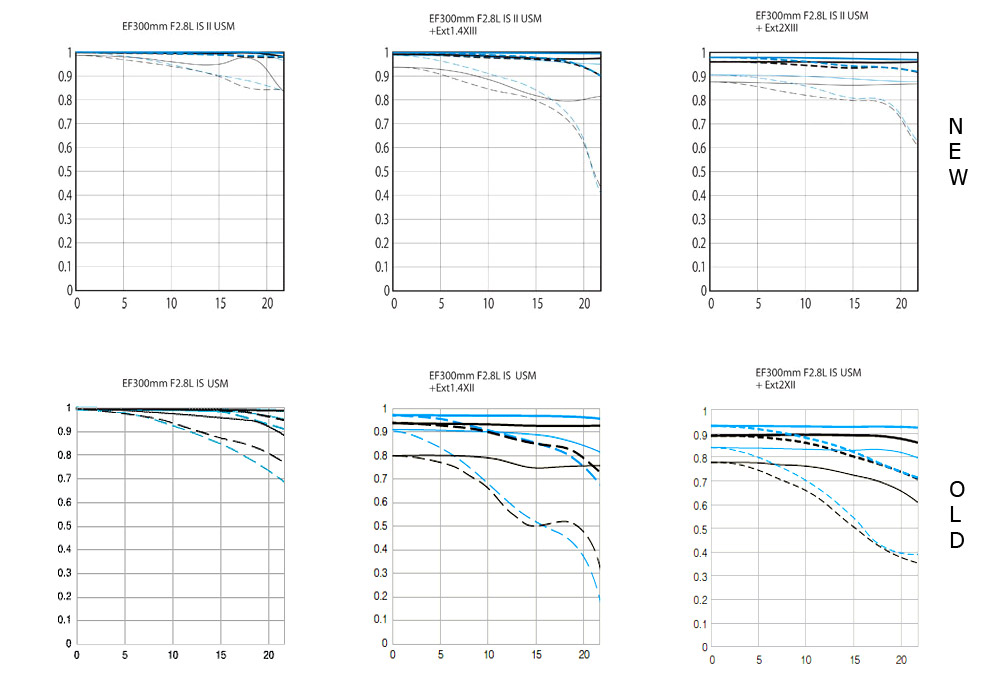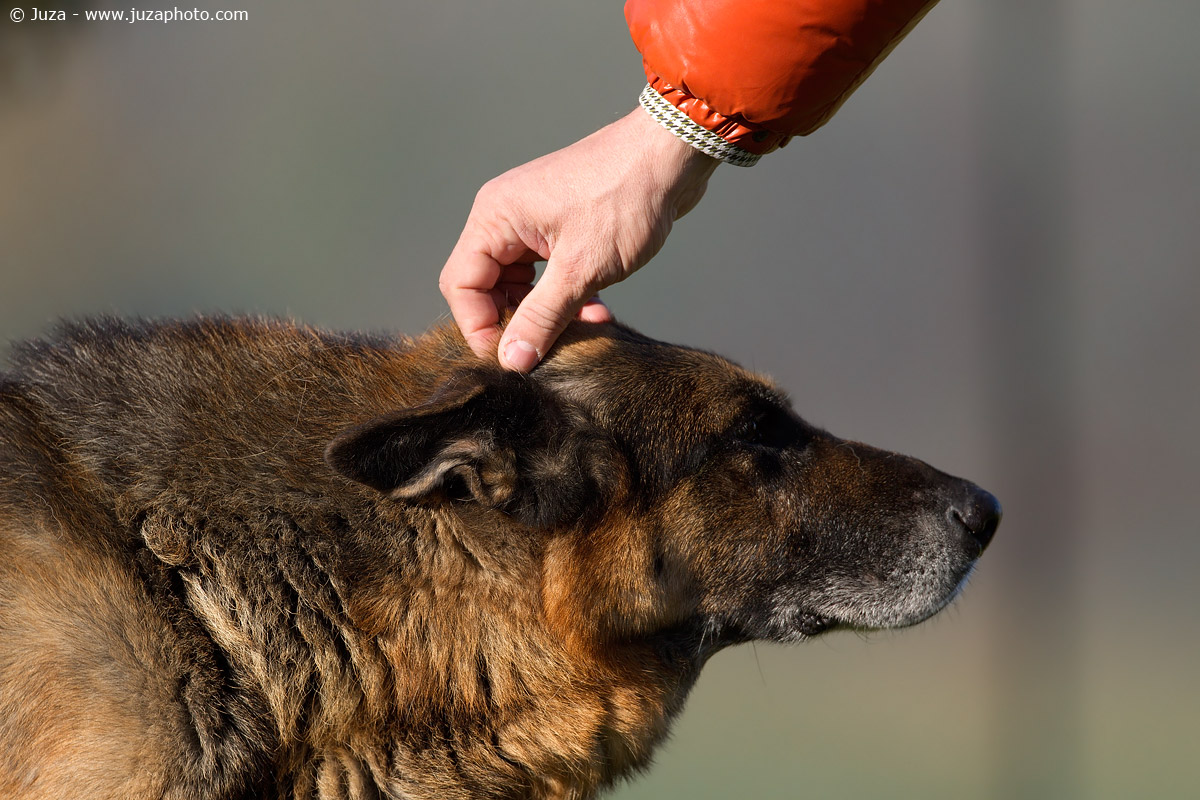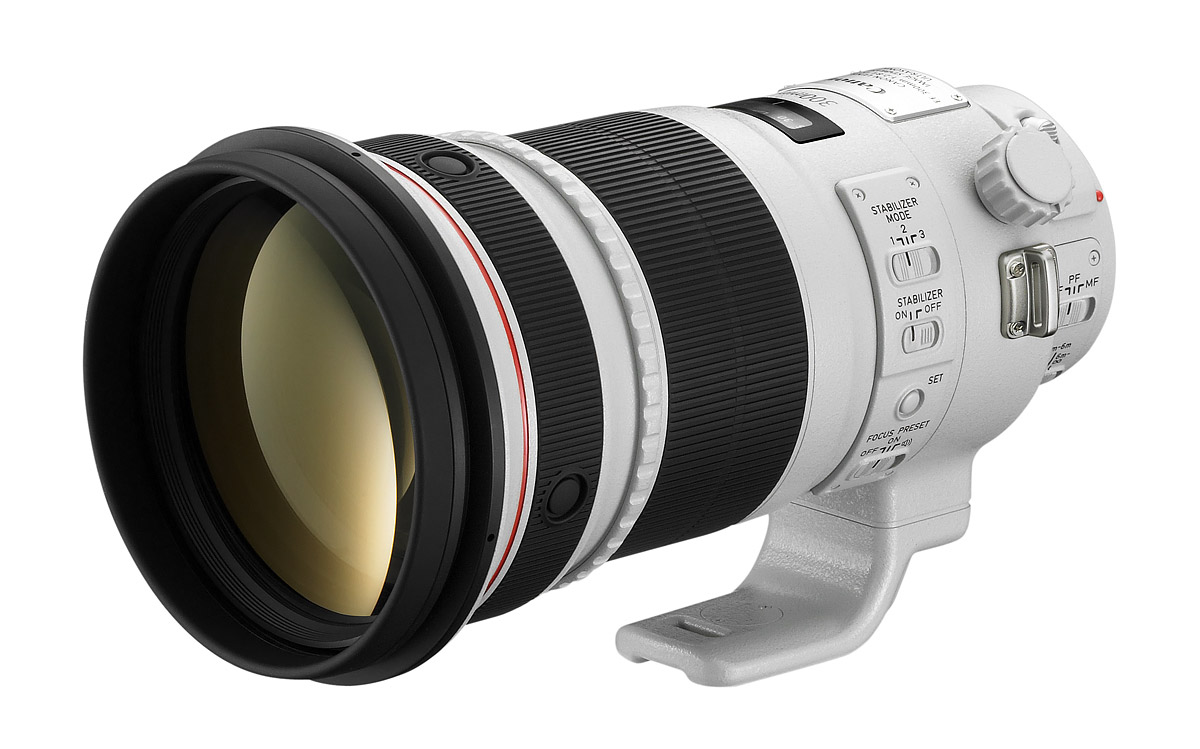Canon 300mm f/2.8 L IS USM II Review
The Canon 300 f/2.8 is my favorite tele lens, and together with Canon 180 Macro, Canon 24-105 and Sigma 8-16, it constitutes my four lenses lineup. On the 7D, it is the equivalent of a 480mm f/2.8, and with the 2x TC I can even get 960mm equivalent: pretty good for most wildlife. Thanks to its relatively small size and light weight it is a great travel lens, and it is easily hand holdable. As you can imagine, when Canon has announced the new version of the 300 f/2.8 I have immediately been very interested to see the improvements made to this already great lens!
Specifications (compared with the previous 300 f/2.8)
����| � | � �Canon 300mm f/2.8 L IS USM II (new) | � �Canon 300mm f/2.8 L IS USM (old) |
�
| �Focal length | � �300 mm | � �300 mm |
�
| �Lenses and groups | � �16 lenses in 12 groups | � �17 lenses in 13 groups |
�
| �Diaphragm blades | � �9 blades | � �8 blades |
�
| �Macro ratio | � �0.18x | � �0.13x |
�
| �Max Aperture | � �f/2.8 | � �f/2.8 |
�
| �Stabilization | � �Yes,4 stops equivalent | � �Yes, 2 stops equivalent |
�
| �Autofocus | � �Ultrasonic AF Motor | � �Ultrasonic AF Motor |
�
| �Closest Focus | � �2.00 meters | � �2.5 meters |
�
| �Dimensions | � �128 (D) x 248 (L) mm | � �128 (D) x 252 (L) mm |
�
| �Weight | � �2350 g | � �2550 g |
�
| �Weather sealing | � �Yes | � �Yes |
�
| �Price | � �$ 7000 | � �4500 $ |
�
| �Production | � �2011- | � �1999-2010� |
�
Built quality and lens construction
Both the new 300 f/2.8 II and 400 f/2.8 II are lighter than their predecessor; the diet has gives impressive results for the big 400 (from 5.35 kg to 3.85 kg), while for the 300 the difference is just 0.2 kg, it has gone from 2.55 kg to 2.35 kg. I was hoping something like the 1.9 kg of the 400 f/4 DO; nevertheless, every weight reduction is welcome. What has been done to reduce the weight?
The optical formula has changed from 17 lenses in 13 groups to 16 lenses in 12 groups; essentially, Canon has eliminated the two UD lenses (Ultra-low Dispersion) and they have added one fluorite lens. Other than that, the protective front element (essentially a flat, fixed protective filter) has been eliminated in the new versions of the 300 2.8 and other superteles. This is an interesting change: it may help to get the very best image quality and to reduce weight, but in case you damage the front element, it will be more expensive to repair. Generally this is not a problem since supertele have an huge lens hood that protect the lens, and after several years using the 300 2.8 IS and 600 f/4 IS I have never had a scratched lens, so the lack of protective element in the new lenses does not worry me too much.

In the illustration above, you can clearly see the differences between the old and the new version of the 300 f/2.8. A difference that does not appear in these images are the improved coatings: Canon has applied new coatings to the lenses, both to improve resistance to flare and resistance to water, dust and other environmental elements.
Other than that, the two lenses are physically very similar: the new 300 has a slightly different design, but the dimensions are essentially the same, with only 5mm of difference in length. The new 300 2.8, unlike the previous version, has a non-removable tripod collar. If you want to reduce weight and size at minimum, you can always remove the foot of the tripod collar, even though I don't recommend it: even if you are going to handheld the lens, the foot can be used as an handle to carry around the lens.
Features: autofocus and image stabilization
The new autofocus adds both speed and more features. Thanks to a new CPU, Canon claims even faster focusing speed. Considering that the minimum focusing distance has been reduced, this is not an easy task: big kudos to Canon if their claim will prove true in practice. Of course the lens uses a ring-type ultrasonic AF motor, and it has full time manual focus, AF stop buttons (I have never used them) and focus preset, another feature I rarely use. An interesting development is that a third AF mode has been added: "PF". PF, that means Power Focus, is essentially manual focus done using the AF motor; it allows to get a more gradual and smooth focus during video. When you set the focus switch on PF, the focus preset ring change its function to electronic focus ring. Even though photographers are not interested by this feature, it is a great news for video makers.
A great news for nature photographers is that the minimum focusing distance has been reduced from 2.5 to 2.0 meters, so the macro ratio has improved from 0.13x to 0.18x. While it is not as good as the 0.25x of the 300 f/4, it is already much better than the previous version, and it is a great help when photographing small subjects. When using the 2x teleconverter, you get a pretty good 0.36x, so it is even possible to do some moderate macro photography with the new 300, in particular if you have an APS-C camera. The focus limiter has been slightly changed, now you can select a focus range between 2 meters to infinity, 2 meters to 6 meters, 6 meters to infinity.
The image stabilization has been improved in several ways. The major difference is that the new IS unit give a "4 stop equivalent" compensation vs the 2 stops of the previous versions; this is an huge improvement when shooting handheld. Other than being more efficient, the new IS unit is smaller and more silent: if you have tried taking videos with the current supertele, you surely know that the noise of the IS can be pretty annoying because it can be clearly heard in video, in particular if you use the camera built-in microphone.

Details of the new 300 f/2.8: the new control panel with IS mode 3, PF, reduced minimum focusing distance.
The new stabilization gives better results even when the lens is mounted on tripod, according to Canon; personally I have never had problems even with the current superteles. Unless the head and the tripod are 100% stable and still, the IS always helps to reduce motion blur. Another new feature is a third IS mode: while Mode 1 (IS active both in vertical and horizontal) and Mode 2 (IS active in vertical only) are unchanged, the new Mode 3 works like Mode 2, it correct the motion blur only in vertical to allow panning, but it is activated only during the exposure, while Mode 1 and Mode 2 are active as long as you keep half pressed the shutter button. I am a bit doubtful about Mode 3; Canon has always recommended to half-press the shutter button 1 or 0.5" before the exposure to give enough time for IS activation, so I wonder if the new Mode 3 will be as effective as Mode 2. With my current 300 f/2.8 L IS, I always use Mode 1; I am curious to see the practical differences in the new version.
Image quality
Of course, image quality is an essential aspect in this lens: will there be a noticeable improvement from the previous 300mm? The old 300 f/2.8 was absolutely fantastic without teleconverters, while with the 1.4x and 2.0x there was a noticeable sharpness and contrast reduction wide open (even though it was still good, one of the best lenses with TCs) and it got much better by stopping down by one stop.
Thanks to the larger use of fluorite, new optical design and new coatings, Canon promises even better image quality than the previous 300mm; in particular, the new 300 should have really low chromatic aberration and improved sharpness with teleconverters. I am absolutely happy with the performance of my 300 f/2.8 without TCs even on the 7D, that has the smallest pixels of any Canon camera, so my interest is mainly about the performance of the new 300 with 1.4x and 2x teleconverters. Together with this lens, Canon has announced also new 1.4x III and 2.0x III TCs, that have improved performance in comparison with their predecessors..

From the MTF graph, the new 300 f/2.8 looks absolutely impressive; it seems to be much sharper than the previous version, both with and without TCs.
Image quality: test on Canon 7D
To evaluate the image quality of the new 300 I have done an in-depth test to compare it with the previous model. I have chosen the Canon 7D (18 megapixels, APS-C) for this test, because it has the smallest pixels of every Canon camera and it shows clearly every problem of the lenses. If a lens give good results on the Canon 7D, it will give similar or better results on all other Canon cameras that have same size or larger pixels, as the 5D or 1 series cameras. The following crops had been taken from unprocessed RAW files (without any sharpening); I have taken a 100% crop from the center of the photo, that usually is the most important area when you take photos with a tele lens.
In this first test, I have compared the 300 II with the previous 300, both lenses are without extenders.
����| � | � � Canon 300mm f/2.8 L IS USM II | � � Canon 300mm f/2.8 L IS USM |
�
| �f/2.8 | � � | � � |
�
| �f/4 | � � | � � |
�
| �f/5.6 | � � | � � |
�
| �f/8 | � � | � � | �
�
At f/2.8, the new 300 is even sharper than the previous version: in this side-by-side test you can clearly see the difference, even though in real world usage it is very difficult to tell the difference between photos taken with the new 300 or old 300, even at f/2.8. Remember that this is a crop from a photo taken with the Canon 7D and with the other Canon SLRs the difference is even smaller. Both lenses show an improvement at f/4, while from f/5.6 the sharpness no longer improves: you have already reached the top sharpness at f/4. Both lenses are excellent, without huge differences.
Image Quality: 300mm + TC 1.4x III
In this second test I have compared the two lenses with the latest version of the Canon 1.4x teleconverter.
����| � | � � Canon 300mm f/2.8 L IS USM II + TC 1.4x III | � � Canon 300mm f/2.8 L IS USM + TC 1.4x III |
�
| �f/4 | � � | � � |
�
| �f/5.6 | � � | � � |
�
| �f/8 | � � | � � |
�
| �f/11 | � � | � � | �
�
With the TCs the difference is more visible; wide open (f/4) the new version has more sharpness and contrast. The difference is noticeable even at f/5.6, while from f/8 they are on par.
Image Quality: 300mm + TC 2.0x III
The last test is the most important one, for me: I often use the 300 with the 2x teleconverter, often wide open, so I was very interested to see the differences.
����| � | � � Canon 300mm f/2.8 L IS USM II + TC 2.0x III | � � Canon 300mm f/2.8 L IS USM + TC 2.0x III |
�
| �f/5.6 | � � | � � |
�
| �f/8 | � � | � � |
�
| �f/11 | � � | � � | �
�
At the maximum aperture, f/5.6, the difference is huge: the new 300 is fully usable, even on Canon 7D (of course it is not razor sharp, but it is not bad), while the previous version is much softer. At f/8 both lenses see a big improvement, even though the new 300 still shows some advantage. There are not further improvements by stopping down to f/11. Overall, it is impressive to see that the new 300 at f/5.6 has almost the same sharpness of the old 300 at f/8!
Sample Photos
These are some sample photos that I have taken with the 300 II and with the latest teleconverters.



Canon 7D, Canon EF 300 mm f/2.8 L IS USM II, Canon 2x III, 1/400 f/5.6, ISO 200, handheld. Download: Post Processed photo / Original Version
Conclusions
The previous version of the 300 f/2.8 was a great lens, but the new 300 is even better, in particular with the extenders: if the price is not a problem, I highly recommend the 300 f/2.8 II. In my opinion it is a great choice for those who travel often: the small size and weight makes it easy to use without tripod and easy to carry around; other than that, it is quite sharp even with 2.0x TC and it allows to get a 600mm fully usable even wide open. On a APS-C camera as the Canon 7D, you have the equivalent of a 960mm!
The only real downside of this lens is its very high price: even though it is the very best 300 f/2.8 that you can buy, the previous version still offers a great value for money (you can find it at a much lower price in the used marked).






























 JuzaPhoto contains affiliate links from Amazon and Ebay and JuzaPhoto earn a commission in case of purchase through affiliate links.
JuzaPhoto contains affiliate links from Amazon and Ebay and JuzaPhoto earn a commission in case of purchase through affiliate links.